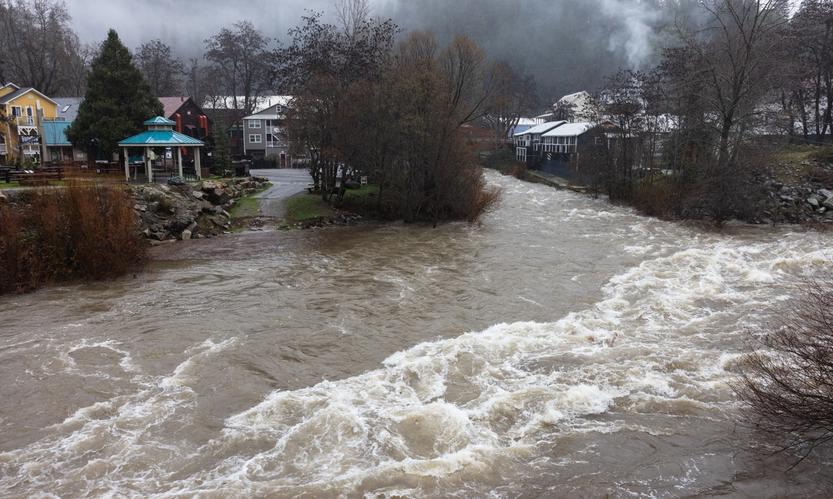How We Went to the Mountains, Part 5
By Mary Flanagan-Hanson
August 31, 2023
[The Clampers] were the only charitable organization to provide relief for families of miners who had been killed or injured during the days of intensive mining activity in the 19th and early 20th centuries. Clamper charity was always done anonymously, if possible. In spite of their hard-drinking reputation, the Clampers were a highly respected organization and good citizens. That occasion in 1937 truly was one more instance in which they carried on their long history of care for those in need. I marvel at the fact that the Clampers who brought gifts came not from Downieville, but from the surrounding mountain towns. This era was in the depths of the Great Depression, and the people in those mountain communities were for the most part of modest means. That they put together a huge gift for the people of Downieville at such a time was something of special historical significance. As Downieville is the seat of Sierra County, we were onlookers at many trials and events at the courthouse, just across the road from our house. The jail was under the courthouse; it consisted of three cells, and the sheriff’s family lived in an apartment at the back of the building. The wife of Sheriff Dewey Johnson cooked the meals for the jail residents. The County Clerk’s Office was a building that sat between us and the courthouse. Many a time the kids in the neighborhood played on its front lawn when they spilled over from our front yard. It had two cannons on the lawn in front, and the small children enjoyed “riding” on the cannons. In the springtime of 1938, a particularly interesting trial took place: A death threat had been made to a candidate for office in an election. It was in the form of an anonymous typewritten letter stating that the candidate should step down or he would be killed. His competitor for office was immediately suspect. The trial was set to determine if so, and a very famous trial detective had been called to testify. Because she wanted to attend the trial, Mother kept me home from school for a few days to watch my baby sister. As a reward for me, she let me attend the trial one afternoon. I remember the detective’s testimony. He had greatly magnified on large posterboard some lines of the letter in question as well as some of the same lines that he typed on the man’s typewriter, an Underwood, and compared the two. He pointed out in detail that certain irregularities in the print coincided with those on the copy he had made on the subject’s Underwood. These he showed in big charts to the jury on the day when I was there. I had not gotten my glasses yet, but I strained to see. It was certain proof. The man ultimately was convicted. It was at this time that Mother set up her easel in our front yard and made a painting of the courthouse. I have that painting today and intend to go to Downieville one more time in my life in order to give it to the museum there. The courthouse burned down in the late 1940s so that painting is now a part of history. In the basement of the courthouse was the jail, which consisted of three cells. Sheriff Dewey Johnson, his wife, and children lived in an apartment at the back of the courthouse. In her kitchen, Mrs. Johnson cooked meals not only for the family, but also for the prisoners. Upon occasion, a prisoner, always a young man, would be allowed out to help us children with our sleds and toboggans. Or to do work around the courthouse. It was impossible for a prisoner to escape, since the river was swift and not fordable, the mountain behind us was passable only by an experienced climber with equipment, and crossing the bridge would not work because an escapee would be seen and immediately apprehended if he tried to leave town by the only road. Besides, prisoners were not allowed to cross the bridge. Behind the County Clerk’’s Office was the gallows, still standing there from rougher times, during the Gold Rush. We kids used to climb on it. Just past and across from the courthouse was located the building where The Mountain Messenger, the local weekly newspaper, was written and printed. By the side of the road sat the huge vat where the lead was melted down to be cast into type for printing. Since it was right out in the open, we could pass by it at any time. I liked to pick up and examine the cold, used type. Of course we stayed away when it was hot. To be continued...Christmas After Tragedy, Part II
A Child’s Life in Downieville
Featured Articles

Storms Bring Heavy Rainfall and Local Disruptions →
December 22, 2025
Sierra County faces power outages and water issues amid heavy rainfall and storm warnings.
215 Animals Seized for Cruelty from Grass Valley Property →
December 22, 2025
Human Remains Found Near South Yuba Bridge in March Identified →
December 17, 2025
Transfer Station Burn Suspended After Community Concerns →
December 16, 2025
Sierra Hardware Plans Extensive Repairs After Flood Damage →
December 8, 2025